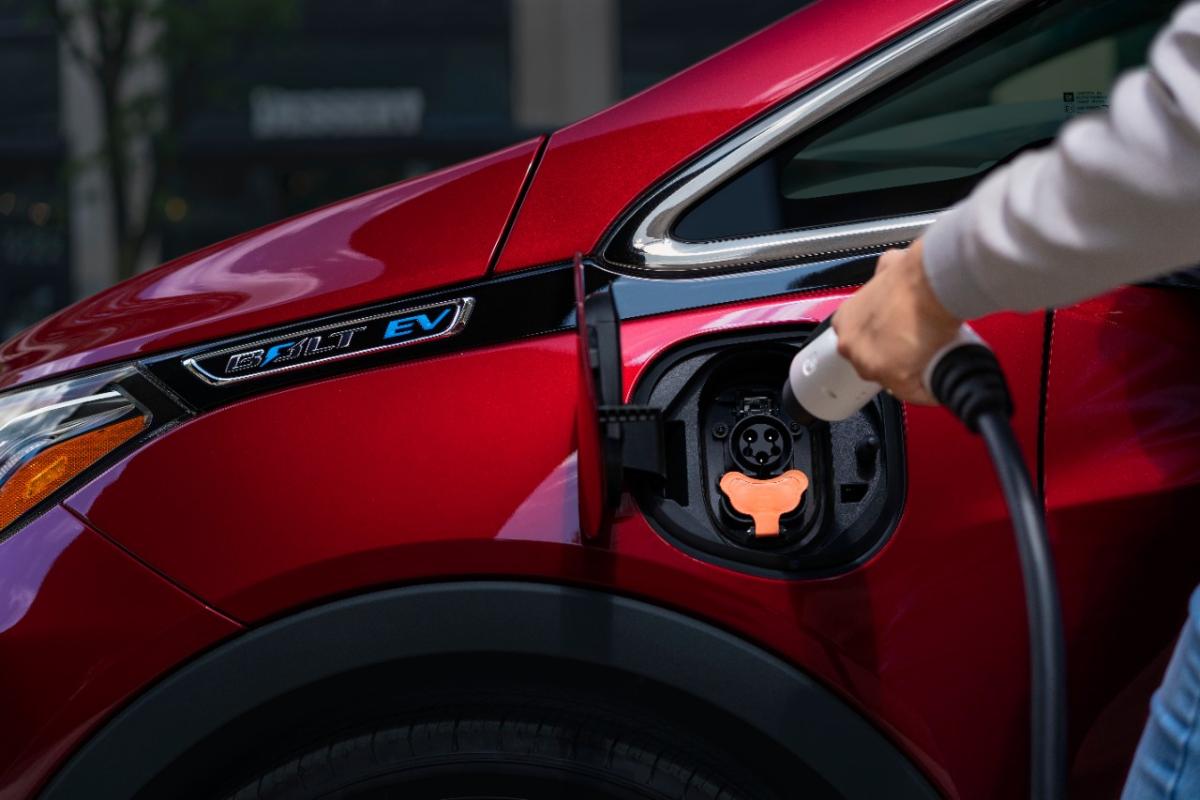GM Continues to Facilitate EV Adoption, Tripling Employee Workplace Electric Vehicle Charging Availability Across U.S. and Canada
Additional 3,500 new EV charging plugs will provide employees even more accessibility to charge at work
GM Continues to Facilitate EV Adoption, Tripling Employee Workplace Electric Ve…
DETROIT, March 3, 2020 /3BL Media/ – General Motors is making electric vehicle charging for employees even more accessible with the addition of 3,500 new EV charging plugs throughout its U.S. and Canadian facilities. This will triple the amount of charging locations that GM currently provides.
“This is another step down the path to making EV ownership easier for everyone, especially for our own employees,” said Mark Reuss, GM president. “Charging infrastructure is crucial to wider acceptance of EVs, and we’ll continue to do everything we can to improve it, both for our employees and for all our customers. We encourage other companies to do likewise.”
Increasing the number of EV charging locations available to consumers is one of the top contributors to growing EV adoption. GM believes charging should be ubiquitous and is working with charging providers to offer EV owners options on where to charge. With the internal popularity of the Chevrolet Bolt EV, and with the well-publicized GMC and Cadillac models that will roll out in the future, GM is committed to ensuring that all employees are able to conveniently charge their vehicles as the employee EV-owner population grows.
Currently, GM helps owners connect with certified at-home charging electricians through Qmerit and recently made enhancements to its Energy Assist feature in the latest version of the myChevrolet app to provide Chevrolet Bolt EV owners improved access to a nationwide network of public charging locations and real-time location data.
Workplace charging is a primary charging source for many EV drivers, yet 900,000 out of 1 million EV drivers are not able to charge their vehicles at work.1 Availability of workplace chargers has been shown to encourage EV adoption, and drivers are six times more likely to drive an EV when charging capabilities are provided at their workplace.2
“Over 90 percent of EV owners charge either at home, at work or a combination of both,” said Rick Spina, vice president of EV/AV commercialization and infrastructure. “We have new EVs from GMC for the 2022 model year and from Cadillac planned for the 2023 model year, and we want to make it as convenient as possible for our employees to enjoy the rewards of EV ownership.”
Workplace charging is valuable for employees and businesses alike. GM hopes to show other companies the value of investing in workplace charging, as it is an affordable employee benefit, supports talent attraction and retention, and showcases the company’s commitment to sustainability.
GM will prioritize charging installation sites based on employee need and will work with charging infrastructure companies to begin installing the charging locations starting in late 2020. GM employees will have access to Level 2 charging, ideal for efficiently charging EVs throughout a workday. Level 2 chargers can charge the current Chevrolet Bolt EV model up to a speed of 25 miles every hour.3
GM recently accelerated its commitment to power 100 percent of global operations with renewable energy by 2040. In the U.S., 100 percent of facilities will be powered with renewable energy by 2030, which means the EVs charged at GM campuses will eventually all be powered by a green grid.
This EV charging investment is a continuation of GM’s commitment to an all-electric future. GM also announced that the Detroit-Hamtramck assembly plant will be GM’s first plant that is 100 percent devoted to electric vehicles and will build the new GMC HUMMER EV for the 2022 model year. In 2019, GM announced a collaboration with LG Chem to mass produce battery cells for future battery-electric vehicles, and a partnership with Qmerit to create a more accessible at-home charging solution.
General Motors (NYSE:GM) is a global company committed to delivering safer, better and more sustainable ways for people to get around. General Motors, its subsidiaries and its joint venture entities sell vehicles under the Chevrolet, Buick, GMC, Cadillac, Holden, Baojun and Wuling brands. More information on the company and its subsidiaries, including OnStar, a global leader in vehicle safety and security services, and Maven, its personal mobility brand, can be found at http://www.gm.com.
Cautionary Note on Forward-Looking Statements: This press release contains forward-looking statements that represent our current judgment about possible future events. In making these statements we rely on assumptions and analysis based on our experience and perception of historical trends, current conditions and expected future developments as well as other factors we consider appropriate under the circumstances. We believe these judgments are reasonable, but these statements are not guarantees of any events or financial results, and our actual results may differ materially due to a variety of important factors, both positive and negative. A list and description of these factors can be found in our Annual Report on Form 10-K and our subsequent filings with the U.S. Securities and Exchange Commission. We caution readers not to place undue reliance on forward-looking statements. We undertake no obligation to update publicly or otherwise revise any forward-looking statements, whether as a result of new information, future events or other factors that affect the subject of these statements, except where we are expressly required to do so by law.
###
1. Thomas, T. ChargePoint (2020, Jan. 28). Why workplace charging is critical to mainstream adoption of EVs in the US. Hybrid and Electric Vehicle Technologies Symposium. Talk conducted at the symposium of SEA International, Pasadena, CA.
2. U.S. Department of Energy. (2017, January). Workplace Charging Challenge Progress Update 2016: A New Sustainable Commute. https://www.energy.gov/sites/prod/files/2017/01/f34/WPCC_2016%20Annual%20Progress%20Report.pdf
3. Charging rate varies based on output of the charge unit, vehicle settings and outside temperature



